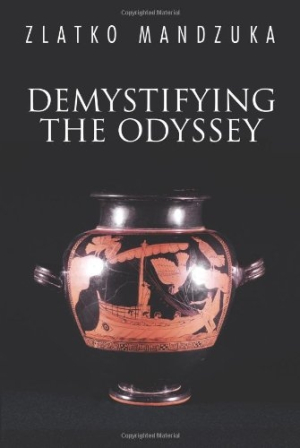Demystifying the Odyssey
In this mesmerizing and extraordinarily researched book, part memoir, part literary thesis, the author traces Odysseus’s adventure both in an academic setting and on the open sea.
Author Zlatko Mandzuka set out to “follow the trail of Odyssey oars and to sail all the areas that [are believed] to have been visited by Odysseus.” Demystifying the Odyssey is his account of that adventure, and the research that led him to sail not the vast distances from the Hellespont to the Pillars of Hercules, as most scholars suppose Homer’s hero is depicted as having journeyed, but along the coast of the Adriatic, whose archipelago the author believes the storied Greek sailor actually visited.
Mandzuka has studied and written extensively about ancient Greece and its most famous poet. He devotes half of his book to making his case that “the ancients did not simply dream up illogical or absurd stories” and that the answer to the question “Are their epics partially or completely authentic?” is a resounding—and provable—yes. Mandzuka cites many of the more familiar of some eighty historians, archaeologists, and other experts on the subject, from the ancient sources such as Strabo and Herodotus up through Heinrich Schliemann (who, by using the works of Homer to guide him, discovered the ruins of Troy in the 1870s) and Michael Wood, one of the most respected scholars on the subject.
Those eager to get their feet wet with Mandzuka as he follows what he believes is the actual course that Odysseus sailed can wade through the well-documented but familiar background (of nearly two hundred pages) on how the Trojan War and the people, places, and events Homer recounts were real. Following this portion of the text, the author presents his case that The Odyssey relates a journey that actually took place, and he describes where it occurred. The next thirty pages support that theory, but it is in the start of part five that Mandzuka’s work changes from a scholarly examination to an adventure travelogue.
Part five takes up almost half of the book as Mandzuka describes in great, exciting, and mesmerizing detail how he sailed to each of the places he believes Homer’s hero visited. Lengthy excerpts from The Odyssey set the stage and mood for each visit, and maps and some (but far too few) photos—most notable among them that of what Mandzuka believes was the cave of the cyclops Polyphemus—help readers follow along on the author’s own odyssey. Perhaps the most memorable of many such moments is when his ship is caught up in a storm where five separate mini-tornadoes buffet his vessel—giving rise to the author’s speculation that Scylla, the six-headed monster of Homer’s work, may have been just a literary depiction of the multiple tornadoes Mandzuka and his crew endured.
Born and educated in the former Yugoslavia, Mandzuka can be accused of some bias in his belief that Odysseus sailed about the islands along the coasts of nations that were once part of the country of his birth. The author, however, provides a wealth of information and many convincing arguments to support that belief. More importantly—and more entertainingly—unlike the stereotypical desk-bound scholars who come to their conclusions only by laboring away in dusty, dimly lit libraries, Mandzuka, like Homer’s hero, has felt the terror of Scylla, climbed the rocks of Calypso’s island, explored the topless towers of Ilium, and sailed the “wine-dark sea.”
Mandzuka has lived the adventure, as will all who follow along through the pages of this modern odyssey.
Reviewed by
Mark McLaughlin
Disclosure: This article is not an endorsement, but a review. The publisher of this book provided free copies of the book and paid a small fee to have their book reviewed by a professional reviewer. Foreword Reviews and Clarion Reviews make no guarantee that the publisher will receive a positive review. Foreword Magazine, Inc. is disclosing this in accordance with the Federal Trade Commission’s 16 CFR, Part 255.

